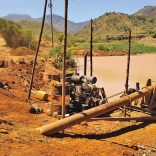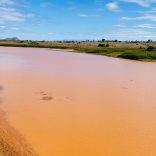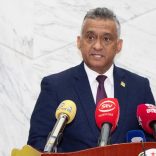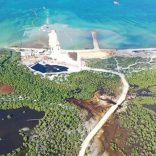Mozambique: A secret nightlife seems to have been set in motion among some of Manica’s gold ...
Energy Fund plans major expansion of reneweables in Mozambique

File photo
The Mozambican government’s Energy Fund (FUNAE) launched on Tuesday in Maputo a portfolio of renewable energy projects, budgeted at 500 million US dollars intended to contribute towards achieving universal access to electricity by 2030.
A press statement from FUNAE explained that 332 small towns across the country will be electrified using hydropower. This will involve building small hydro-electric networks capable of generating slightly more than 1,000 megawatts.
A further 343 projects will depend on solar power, including 10 medium sized mini networks generating between one and three megawatts, and 111 micro-networks, that can generate up to 100 kilowatts.
“The portfolio of projects identifies the potential sites for projects based on solar power, hydropower or a combination of the two, taking account of the availability of energy resources at each place”, says the FUNAE statement. The initiative is intended to guarantee that, within about 15 years, the entire Mozambican population will have access to electricity, most of them from small scale systems that are outside the national grid managed by the publicly owned electricity company, EDM.
Recently FUNAE and the Portuguese company Galp-Energia signed a partnership protocol to install solar power systems in rural communities in Maputo, Sofala, Manica and Cabo Delgado provinces. Five towns will be electrified in these provinces, benefitting health centres, schools, water supply systems and buildings of the public administration.
“Budgeted at slightly more than 40 million meticais, and lasting for two years, the agreement is in line with the objectives laid down by the government, aimed at the gradual expansion of access to electric power”, FUNAE said.
Solar power has already made a major impact on public services in the Mozambican countryside. The statement pointed out that between 2005 and 2014 more than 3.7 million Mozambicans benefitted from solar power. Based on photo-voltaic systems, 201 small towns, 669 schools, 623 health centres and 77 public buildings were electrified.












Leave a Reply
Be the First to Comment!
You must be logged in to post a comment.
You must be logged in to post a comment.